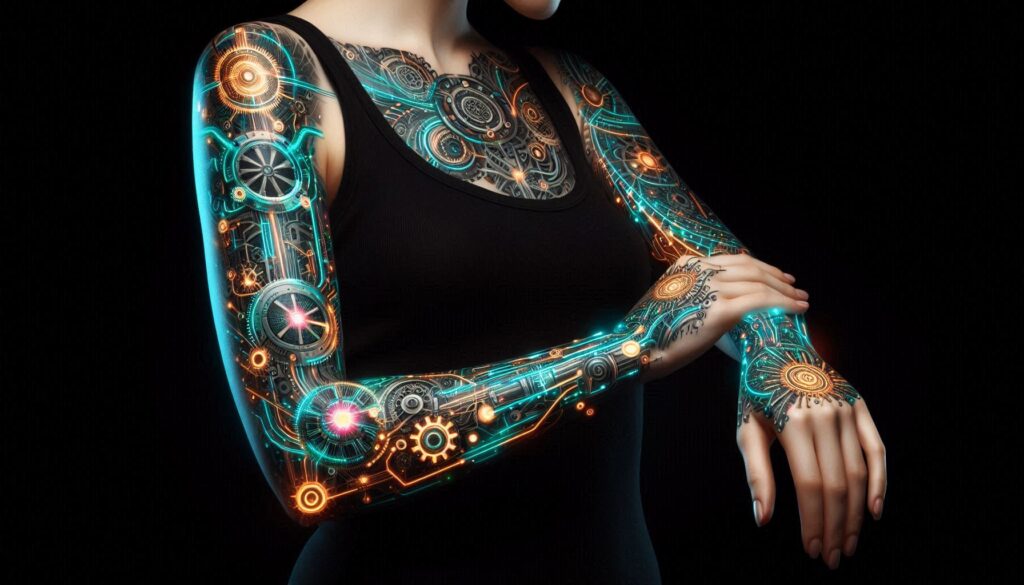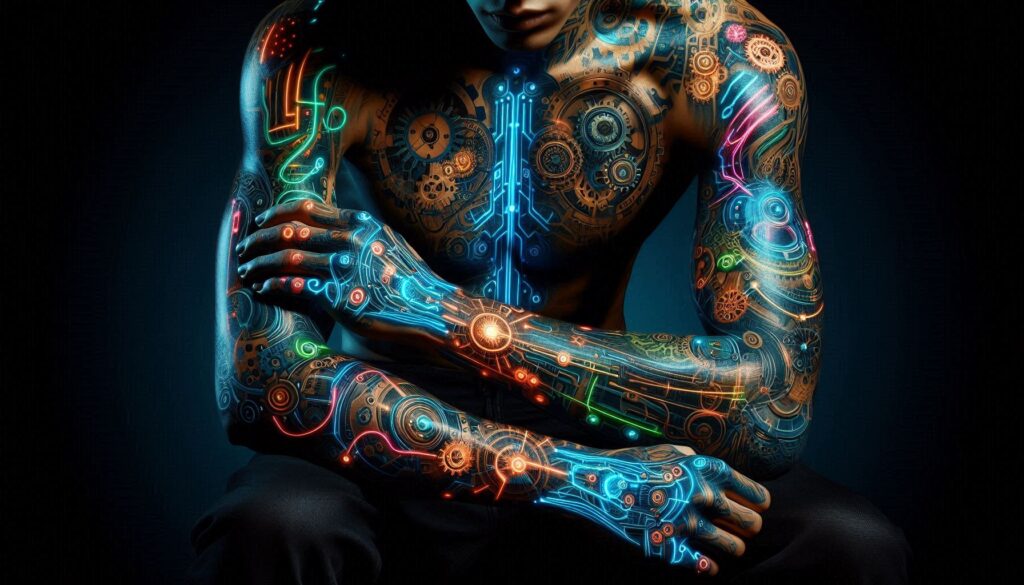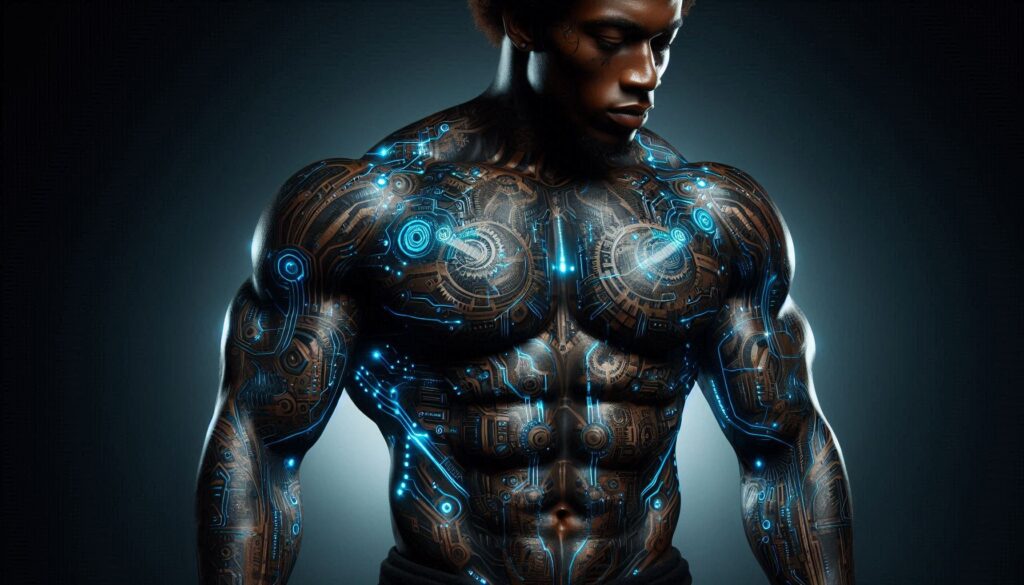Biomechanical Tattoos: The Fusion of Art and Engineering in Australian Ink
Australia’s tattoo culture is as vibrant and diverse as the country itself, continually evolving with new styles and trends. Among these, biomechanical tattoos have carved out a unique niche, blending the imagination of science fiction with the precision of engineering and art. For those unfamiliar, biomechanical tattoos incorporate designs that make the skin appear as if it’s fused with machine parts—gears, pistons, and other mechanical elements—giving the illusion of cyborg-like anatomy. This futuristic, artistic fusion is something that Australians, known for their bold choices and appreciation for innovation, have embraced enthusiastically.
In this article, we’re diving deep into the fascinating world of biomechanical tattoos, exploring their origins, symbolism, why they resonate with Australians, and how they’re executed with breathtaking precision by talented tattoo artists across the country.

The Birth of Biomechanical Tattoos
Before we explore why biomechanical tattoos have taken off in Australia, it’s essential to understand where this unique style originated. The biomechanical aesthetic first gained prominence in the late 1970s and 1980s, heavily influenced by the works of Swiss artist H.R. Giger, most famous for his conceptual art for the film Alien. Giger’s vision was one of dark, surreal landscapes populated by nightmarish creatures, where biology and machinery coexisted in a seamless, often disturbing harmony. This fusion of organic and synthetic forms found a natural home in tattoo art, inspiring artists to recreate these futuristic designs on human skin.
While the biomechanical style originally leaned toward darker, more dystopian imagery, tattoo artists have since evolved the genre to incorporate brighter colors, softer lines, and more varied mechanical elements. Today, biomechanical tattoos in Australia reflect a wide range of artistic interpretations, from hyper-realistic mechanical appendages to more abstract, steampunk-inspired designs.
What Exactly Is a Biomechanical Tattoo?
At its core, a biomechanical tattoo is about creating the illusion that mechanical components are integrated with the human body. These designs often follow the natural contours of the wearer’s muscles, bones, and joints, giving the appearance that gears, cables, and pistons are functioning beneath the skin. The result is a surreal blend of human anatomy and machine, where flesh seems to peel away to reveal the workings of a mechanical being.
What makes biomechanical tattoos stand out is the level of detail required to create these intricate illusions. Every cog, every piece of metal, and every wire must be rendered with precision to give the tattoo a sense of three-dimensionality. The shading and color work are crucial in ensuring that the mechanical components feel lifelike, as if the wearer’s skin is just a thin layer covering the machinery beneath.
The Rise of Biomechanical Tattoos in Australia
Australia has always had a strong tattoo culture, with people using ink to express personal stories, beliefs, and connections to their surroundings. Over time, biomechanical tattoos have become increasingly popular Down Under, and for good reason. The genre aligns with the adventurous spirit that defines many Australians, offering a style that’s both visually striking and deeply symbolic.
1. Innovation and Individuality
Australians are known for their appreciation of innovation, and biomechanical tattoos embody this spirit. No two biomechanical tattoos are alike; each design is tailored to the individual’s body, making it as unique as the person wearing it. The complexity of the designs, coupled with the sheer artistry involved, allows wearers to showcase their individuality in a way that’s difficult to replicate with other tattoo styles.
In Australia, where personal expression is highly valued, biomechanical tattoos offer a chance to stand out. They provide a level of customization and creativity that appeals to those who want something completely unique, whether they’re tech enthusiasts, fans of science fiction, or just people who appreciate complex, imaginative art.
2. A Fascination with Technology
Australia’s growing tech and engineering sectors have undoubtedly influenced the rise of biomechanical tattoos. Many Australians work in fields where technology and innovation play a central role in daily life, from software development to robotics and artificial intelligence. For these individuals, biomechanical tattoos offer a way to symbolically blend their human side with the machines and technology they interact with, sometimes on a daily basis.
Additionally, Australia’s love of science fiction and futuristic films further fuels the demand for biomechanical tattoos. Many Australians are inspired by characters and worlds where humans and machines merge, and a biomechanical tattoo allows them to bring this fantasy into reality in a deeply personal way.

3. Cultural Connection to Body Art
Tattoos have long been a part of Australian culture, stretching back to Indigenous practices. While biomechanical tattoos are a far cry from traditional Indigenous designs, the country’s long history with body art makes it a natural fit for this cutting-edge style. Australians have long used tattoos to tell stories, celebrate milestones, or express a connection to their heritage or environment. Biomechanical tattoos take that a step further by turning the body itself into a canvas for highly imaginative, futuristic art.
The Artistic Process Behind Biomechanical Tattoos
Creating a biomechanical tattoo is no small feat. These tattoos require an artist with a deep understanding of anatomy, shading, and the principles of mechanical design. Not every tattoo artist can successfully execute a biomechanical tattoo—this style demands a mastery of detail, perspective, and the ability to create the illusion of depth on a two-dimensional surface.
The process typically begins with a consultation, during which the artist will discuss the client’s ideas and look at the area of the body where the tattoo will be placed. Since biomechanical tattoos follow the natural flow of muscles and bones, the artist must take into account the wearer’s unique body shape to ensure that the design fits perfectly.
1. Designing the Tattoo
The design phase is where the magic happens. Some clients come in with a clear vision of what they want—perhaps a biomechanical arm, where their skin peels back to reveal gears and wires. Others may only have a general idea and leave the creative direction up to the artist. Either way, the artist must create a design that integrates seamlessly with the client’s anatomy, making it look as though the mechanical parts are really a part of their body.
Many biomechanical designs are inspired by science fiction, featuring mechanical elements like gears, pistons, and tubing. However, the style is incredibly versatile, allowing for a wide range of interpretations. Some designs lean heavily on a dark, gritty aesthetic, while others incorporate brighter colors or a more streamlined, futuristic look.
2. Tattooing Process
Once the design is finalized, the actual tattooing process begins. Biomechanical tattoos are usually large and detailed, often requiring multiple sessions to complete. The artist will start by outlining the basic shapes and structures of the design, ensuring that everything is placed correctly. From there, they’ll begin the painstaking process of adding shading, color, and fine details to bring the tattoo to life.
The key to a successful biomechanical tattoo is in the shading. Proper shading creates the illusion of depth, making the mechanical components appear as though they are really embedded in the skin. Many artists use a combination of black-and-gray shading and color work to achieve this effect. The result is a tattoo that feels three-dimensional and incredibly lifelike.
Symbolism in Biomechanical Tattoos
For many Australians, biomechanical tattoos go beyond aesthetics—they carry deep personal symbolism. The fusion of human and machine in these designs can represent many different things, depending on the individual.
1. The Duality of Humanity and Technology
One of the most common interpretations of biomechanical tattoos is the idea of the fusion between humanity and technology. In an increasingly digital world, where machines and computers are integral to our daily lives, biomechanical tattoos can symbolize the growing connection between humans and the technology they use. This theme resonates strongly in Australia, where many people work in tech-driven industries and have a deep appreciation for both the creative and practical sides of technology.
2. Strength and Resilience
Biomechanical tattoos can also represent strength, resilience, and adaptability. By incorporating mechanical elements into the body, the wearer is symbolically showing that they are as tough and reliable as a machine. This idea of personal strength is particularly appealing to many Australians, who value independence, self-sufficiency, and the ability to overcome challenges.
3. The Future of Humanity
For some, biomechanical tattoos represent a vision of the future—a future where humans and machines coexist, perhaps even merging to become one. This futuristic theme is particularly popular among fans of science fiction and those who are fascinated by the possibilities of human augmentation, robotics, and artificial intelligence. In a country that values innovation and looks to the future, it’s no wonder that biomechanical tattoos have found a home in Australia.
Finding the Right Artist in Australia
As biomechanical tattoos require a high level of skill, it’s essential to choose the right artist. Not all tattooists have the experience or artistic ability to successfully pull off a biomechanical design, so it’s crucial to find someone who specializes in this style.
In Australia, Tattoos Down Under is a leading name when it comes to biomechanical tattoos. Their team of artists has honed their skills over years of practice, creating biomechanical masterpieces that combine precision engineering with artistic flair. Whether you’re looking for a subtle, minimalist biomechanical tattoo or a full sleeve that transforms your arm into a piece of living machinery, Tattoos Down Under has the talent and experience to make it happen.

By choosing the right artist, you can ensure that your biomechanical tattoo not only looks amazing but also stands the test of time. With proper care and attention to detail, these tattoos can remain sharp and vibrant for years to come.
Conclusion: The Future of Biomechanical Tattoos in Australia
Biomechanical tattoos represent the perfect fusion of art and engineering, a style that speaks to the creativity, individuality, and innovation that Australians hold dear. Whether you’re drawn to the intricate details, the futuristic aesthetic, or the symbolic meaning behind the designs, a biomechanical tattoo offers a unique way to express yourself.
If you’re considering getting a biomechanical tattoo, look no further than Tattoos Down Under. With their team of skilled artists and a deep understanding of biomechanical design, they can help you bring your vision to life, ensuring that your tattoo is as unique and individual as you are.


Leave a Reply